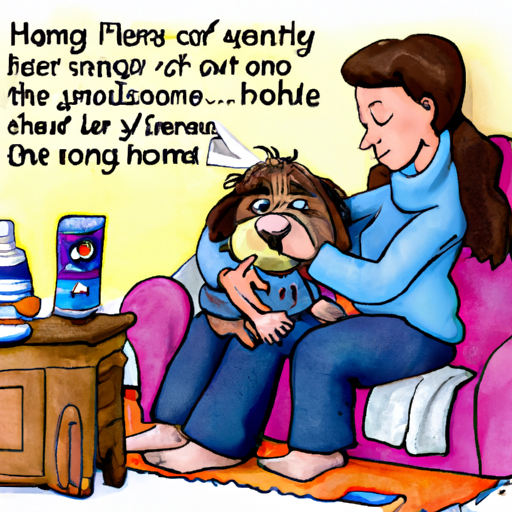As a dog caregiver, you know that every canine companion comes with its own unique set of needs and challenges. One such challenge you may encounter is a phenomenon known as “reverse sneezing”. But don’t fear, you are not alone, and there are several ways to help your furry friend when they experience this.
What is Reverse Sneezing?
Reverse sneezing, also known as pharyngeal gag reflex or inspiratory paroxysmal respiration, is a common respiratory event in dogs. It’s characterized by rapid, forced inhalation through the nose, followed by choking or gagging sounds. While it might seem alarming to you, it’s usually harmless to your dog. It’s not a sneeze, but rather, a spasm that can be triggered by a variety of irritants or by the dog’s excitement.
Causes of Reverse Sneezing
The exact cause of reverse sneezing is unknown, but it’s generally believed to be a response to an irritant in the nasal passages. These irritants can include:
- Dust
- Pollen
- Perfumes
- Household chemicals
- Mites
- Viruses
Furthermore, some dogs are more susceptible to reverse sneezing than others, particularly brachycephalic breeds (those with flat faces), like Bulldogs and Pugs.
How to Stop a Reverse Sneezing Episode
When your dog starts reverse sneezing, there are a few steps you can take to ease their discomfort:
- Stay calm: Your dog can pick up on your anxiety, which may exacerbate the episode.
- Gently stroke their throat: This can sometimes stop the spasm.
- Cover their nostrils: This forces your dog to swallow, which can clear out whatever may be causing the irritation.
- Try distraction: A toy or treat can sometimes redirect their focus and stop the episode.
Long-Term Management of Reverse Sneezing
While you can’t always prevent reverse sneezing, there are a few steps you can take to reduce the frequency of episodes:
- Regularly clean your home to remove potential irritants.
- Limit exposure to allergens, like pollen.
- Avoid using strong perfumes or household chemicals around your dog.
Furthermore, if your dog’s reverse sneezing becomes frequent or severe, you should consult with your vet.
FAQs
Q: Is reverse sneezing harmful to my dog?
A: Usually, it’s not harmful. It’s a natural reaction to irritants. However, if it becomes frequent or severe, consult your vet.
Q: Can reverse sneezing be prevented?
A: While you can’t always prevent it, you can reduce the frequency by removing potential irritants and allergens from your dog’s environment.
Q: Should I take my dog to the vet for reverse sneezing?
A: If it’s infrequent and your dog seems fine afterwards, there’s no need. However, if it becomes frequent or severe, or if your dog seems distressed, it’s a good idea to consult with your vet.
In conclusion, while reverse sneezing can be a startling experience for both you and your dog, it’s usually a harmless event that can be managed with care and attention. Remember, you’re not alone in this, and there are resources and strategies available to help you navigate this part of your dog’s life.



